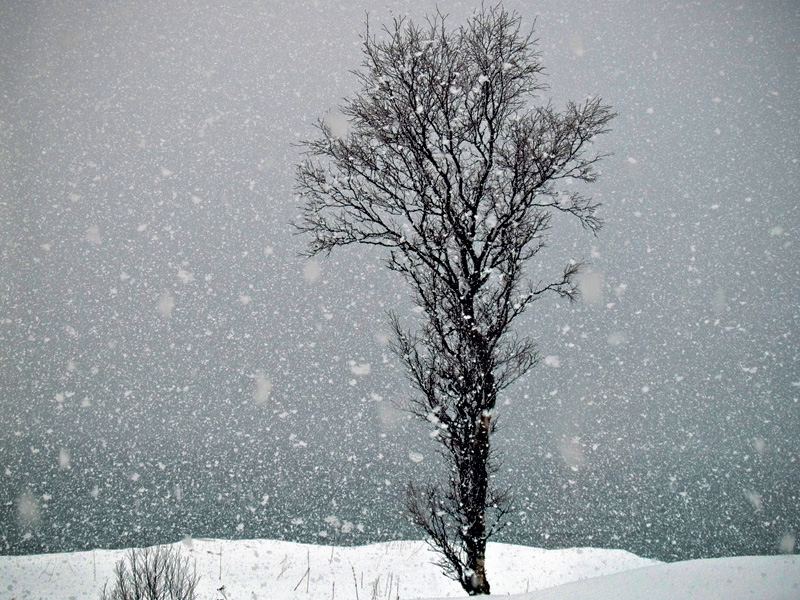
Snow is pounding us for the third time in two weeks and classes once again have been canceled. Significantly enough, I have been forced once again to postpone Midsummer Night’s Dream. “Where are the songs of spring? Ay, where are they?” queries Keats (although he’s asking from the vantage point of autumn, not that of midwinter).
To be strictly accurate, we are currently getting frozen rain rather than snow. If this is followed up by the predicted 30-mile-an-hour winds, we could well experience a killer ice storm and power outages. All this past week we have been admiring our Currier and Ives snow scenes, but I suspect we’re all about to get a little less sentimental about nature.
There are great images of winter’s misery in Sir Gawain and the Green Knight, which I taught last week. Sir Gawain is venturing out to keep his rendezvous with the Green Knight, who is to be found somewhere in the wilderness of Wales. The elements add the finishing touches to Gawain’s misery:
And if the wars were unwelcome, the winter was worse,
When the cold clear rains rushed from the clouds
And froze before they could fall to the frosty earth.
Near slain by the sleet he sleeps in his irons
More nights than enough, among naked rocks,
Where clattering from the crest the cold stream ran
And hung in hard icicles high overhead.
Medieval literature doesn’t go directly into psychological states, but it gives us images that let us know how Gawain is feeling. Such as:
With many birds unblithe upon bare twigs
That peeped most piteously for pain of the cold.
The good knight on Gringolet glides thereunder.
Gawain could be one of those birds, suffering and filled with self-pity. At the end of his rope, he prays to the Virgin Mary for help.
I read the images of a cold and lost Gawain cold as symbolic of an existential crisis. He knows he is only days away from his death at the hands of the Green Knight, and the poet has used this wintry mix to get at his feelings of desolation. Witnessing such a mix outside my window ( I’m not even out in it), I can verify that the poet gets it right.
As if in response to his prayers, a magnificent castle appears to Gawain. In this castle he will meet (as I interpret them) the Lord of Death and the Lady of Life. In response to his despair they will (1) affirm that death is in fact inevitable but (2) remind him that life offers up many delights. How should Gawain handle his depression about dying? Live fully in life’s sensuous present. One could argue that Gawain has a “mind of winter,” to quote Wallace Stevens, and that Nature is trying to shake him up. If the knight steps out of his self-denying mindset and acknowledges that he does in fact love his life (by accepting the lady of the castle’s green sash), Green Knight Nature will give him a bit more time to enjoy it.
In short, look through the sleet and snow to the green life that beckons beyond. “If winter comes, can spring be far behind?” Percy Shelley asks, hopefully rhetorically.
Should we experience a full-fledged ice storm, I promise a post on Robert Frost’s “Birches” for tomorrow.

